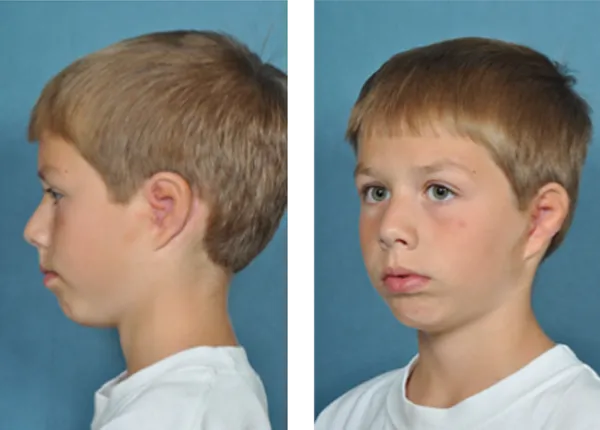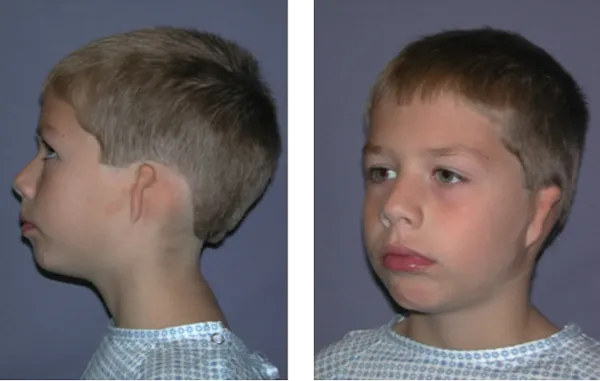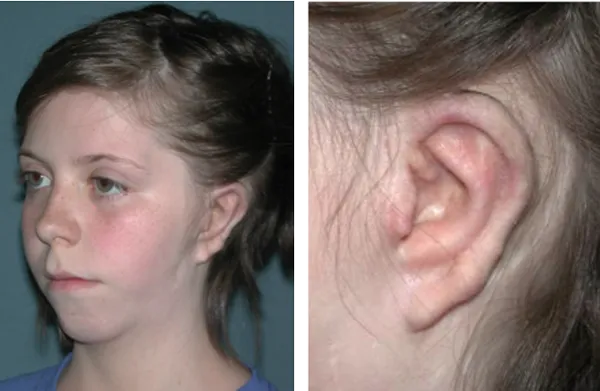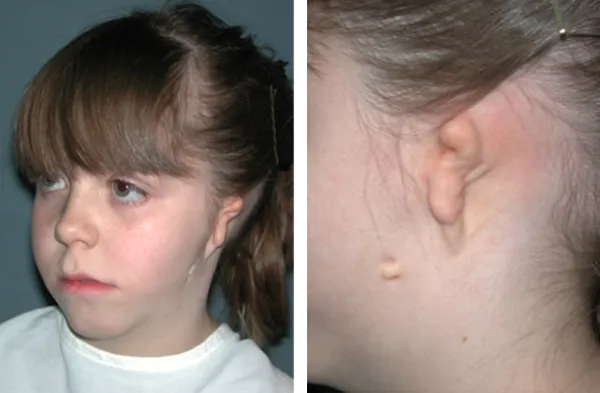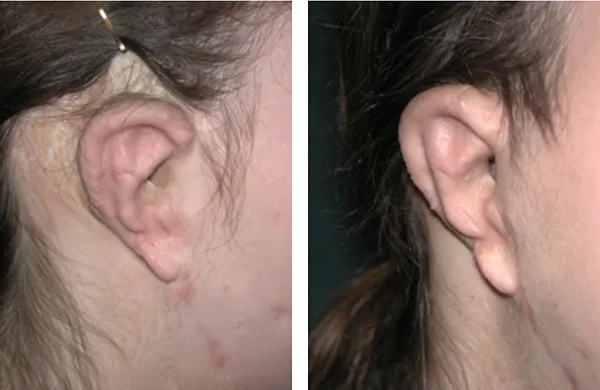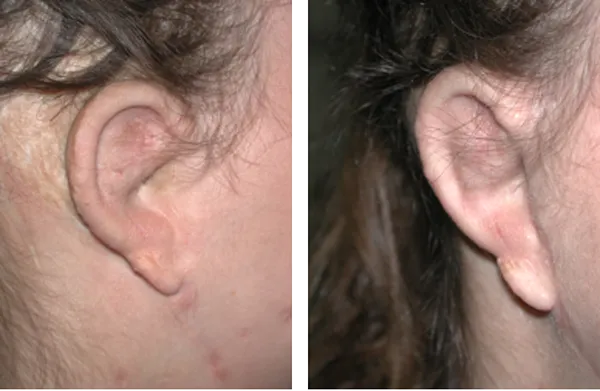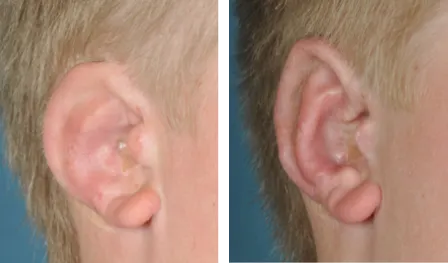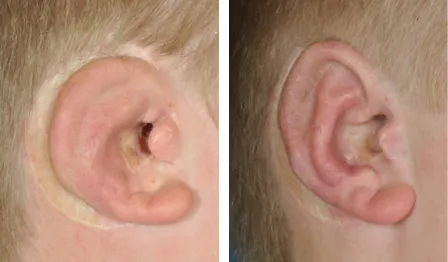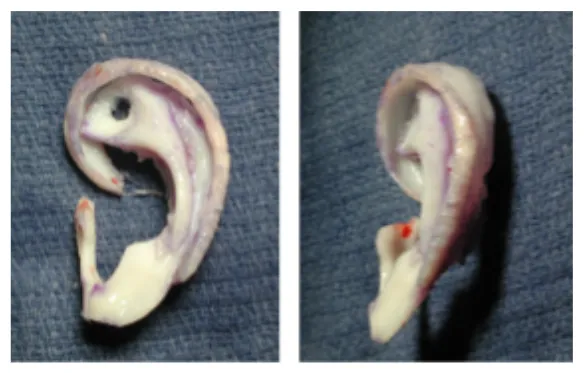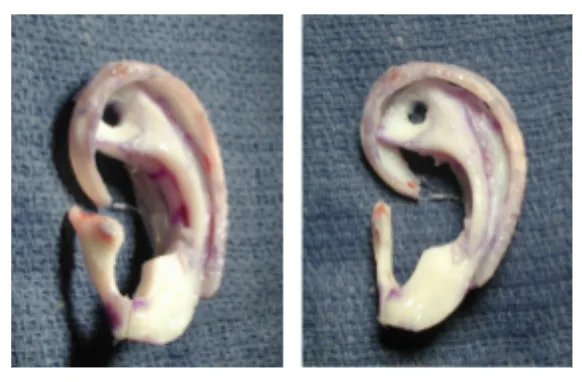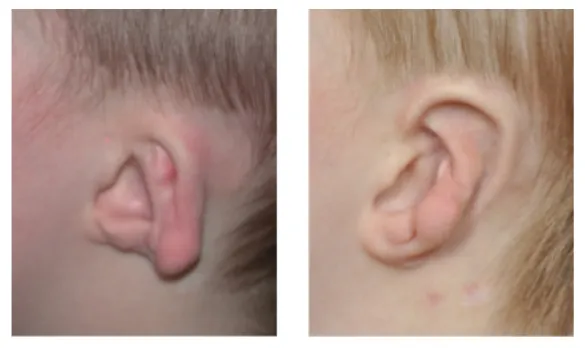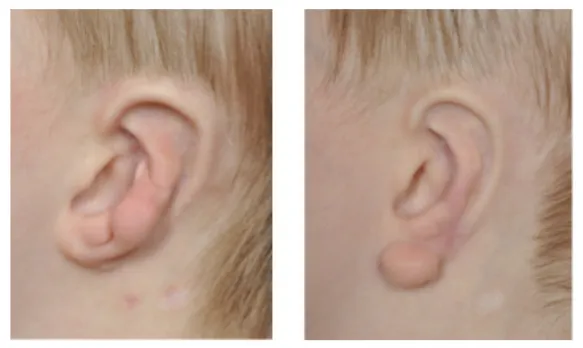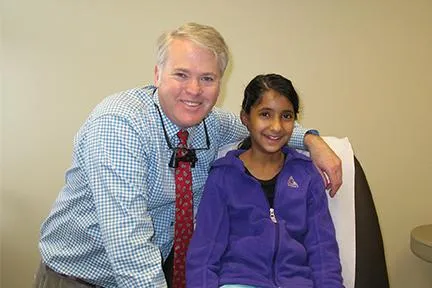
Top MICROTIA PROCEDURES In Utah
Microtia is associated with varying degrees of deformity:
Microtia is associated with varying degrees of deformity:
- Grade I: Mild deformity
- Grade II: Small Ear
- Grade III: Sausage or Peanut shaped ear (most common)
- Grade IV: Anotia (absent ear).
Microtia statistics:
- Grade I: Mild deformity
- Grade II: Small Ear
- Grade III: Sausage or Peanut shaped ear (most common)
- Grade IV: Anotia (absent ear).
What Is A Microtia Procedure?
A Surgical Solution to Restore the Natural Balance & Shape of Your Ears
The outer ear is made up of cartilage, a connective tissue that develops in the womb, and in some cases, the growth of this tissue fails to progress properly. Microtia is considered a rare condition; however, the exact incidence and prevalence of microtia worldwide is unknown. It's estimated that 1 in 5,000 people is born with this condition.
The result you can achieve through ear reconstruction depends on your surgeon’s artistic ability to sculpt the new ear from cartilage. The process begins with careful planning using measurements, patterns, molds, and plaster casts made from the ear on the opposite side.
Overview
1. A Popular Cosmetic Procedure With High Satisfaction
2. Enhances The Appearance Of The Face
3. Using Advanced Surgical Techniques
4. Incisions Are Placed To Produce Optimal Results
5. Technique That Gives A More Natural Look
6. Recovery Is Relative To The Patient
7. Most Patients Are Pleasantly Surprised
8. Two Weeks Off Of Work Is Recommended
9. Resume Athletic Activities In Six 6 Weeks
10. Look Forward To Looking Younger Longer
Overview
1. Rib cartilage forms the ear framework.
2. Uses patient’s own tissue.
3. Cartilage from the opposite ear.
4. Fat grafting for volume enhancement.
5. Prosthetic ears as a non-surgical option.
6. Synthetic frameworks risk erosion and infection.
7. Surgery for patients 6+ or at injury/cancer removal.
8. Hearing restoration with new canals or bone conduction aids.
9. Secondary reconstruction for revision of previous results.
10. Partial reconstruction with skin flaps or grafts.
*Disclaimer: Individual results vary. Images do not constitute a promise or representation of any particular outcome or experience.
This eight-year-old boy has classic Grade III (Lobular) Microtia the first set of two pictures show him before his reconstructive surgery and the second set of two pictures show his results after having all four stages of Microtia Ear Reconstruction.
This eight-year-old boy has classic Grade III (Lobular) Microtia the first set of two pictures show him before his reconstructive surgery and the second set of two pictures show his results after having all four stages of Microtia Ear Reconstruction.
About the Microtia Procedure
Microtia is associated with varying degrees of deformity:
Grade I: Mild Deformity
Grade II: Small Ear
Grade III: Sausage or Peanut Shaped Ear (most common)
Grade IV: Anotia (absent ear).
WATCH Dr. Fairbanks's (of ABC4 & CW30's Talk 365 TV Wellness Team of Experts) discussion on several methods for reconstructing ears. Find out why using his techniques are highly recommended for producing long-lasting, natural outcomes. Dr. Fairbanks offers professional advice to assist you in selecting the best course of action, whether you are thinking about fat grafting, patient-provided tissue, or rib cartilage. To find the best course of action for restoring the look and functionality of your ears, do some research and schedule a consultation with Dr. Fairbanks.
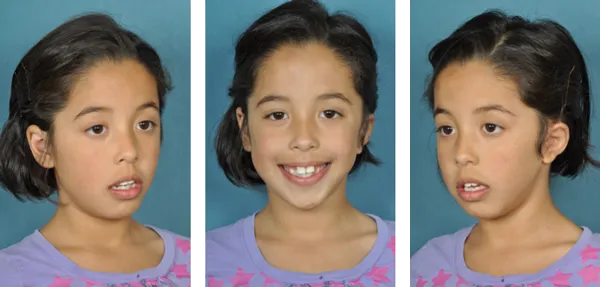

*Disclaimer: Individual results vary. Images do not constitute a promise or representation of any particular outcome or experience.
The photos above shows a seven-year-old girl, who had classic Grade III (Lobular) Microtia, after completing the Four Stages of Ear Reconstruction.
The photos above shows a seven-year-old girl, who had classic Grade III (Lobular) Microtia, after completing the Four Stages of Ear Reconstruction.
Candidates
Need to get this from Dr. Fairbanks.... The typical candidates for Ear Microtia Reconstruction includes women, men and children that were born with Ear Microtia...
Other Factors Include:
- Disappointment with Noninvasive Procedures such as Chemical Peels & Lasers
Good Physical Health
Non-Smoker
Positive Outlook
Realistic Expectations

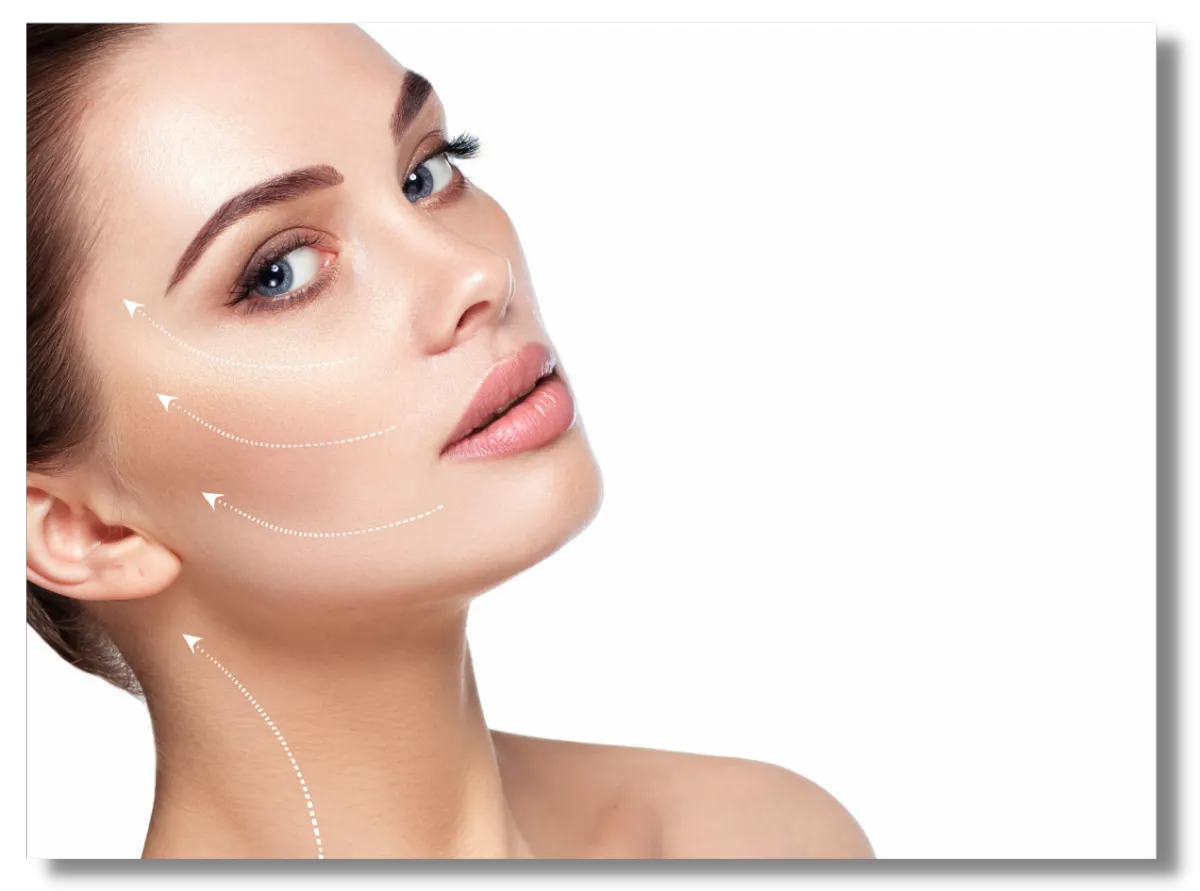
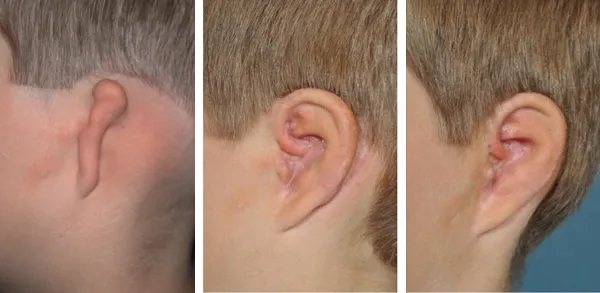

*Disclaimer: Individual results vary. Images do not constitute a promise or representation of any particular outcome or experience.
This eight-year-old boy had a classic Grade III Microtia (Atresia). The first picture on the left shows the boy’s ear before reconstructive surgery and the two pictures on the right show his results after completing the Four Stages of Ear Reconstruction.
This eight-year-old boy had a classic Grade III Microtia (Atresia). The first picture on the left shows the boy’s ear before reconstructive surgery and the two pictures on the right show his results after completing the Four Stages of Ear Reconstruction.
Procedure Details
Incisions are placed to produce optimal results. The telltale signs of a facelift include a shortening or even loss of sideburns, hair loss causing a "white wall" appearance, obvious scars, stitch or staple marks behind the ears, tethered earlobes, and often a short or absent tragus (trapdoor over the ear canal). The facelift offered at Fairbanks Plastic Surgery decreases the visibility of the scars and these telltale signs. The small incision under the chin allows for additional tightening of the neck muscles. The facelift with the most impressive results can be considered a double-lift, in that the deeper tissues are raised followed by the lifting of the skin.
At the end of the procedure a protective dressing is placed, which helps reduce swelling and bruising; this dressing is changed the next day. The care in this technique minimizes bruising and swelling, allowing patients to go out in public within 12-14 days.
*Disclaimer: Individual results vary. Images do not constitute a promise or representation of any particular outcome or experience.
This seven-year-old girl also had a Grade III (Lobular) microtia with atresia. The upper two photos show the patient prior to reconstructive ear surgery and the lower two photos demonstrate her results.
This seven-year-old girl also had a Grade III (Lobular) microtia with atresia. The upper two photos show the patient prior to reconstructive ear surgery and the lower two photos demonstrate her results.
Timing
Microtia reconstruction surgery can begin as early as age six. At this age the ear is approximately 85% of its adult size and there is enough rib cartilage to sculpt the new ear. This is also the time when the child is becoming aware of the deformity, often due to teasing at school. At this age, the child is more capable of caring for the ear after the operation.
Older patients can start the reconstruction process immediately following the loss of an ear due to cancer or as the result of an accident. In all cases, carving a new framework from the patient’s own rib cartilage will provide the best chance of success.
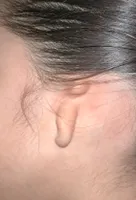
*Disclaimer: Individual results vary. Images do not constitute a promise or representation of any particular outcome or experience.
In these images, the first set shows the patient before secondary ear reconstruction. She had two Medpor frameworks placed in her ear by another surgeon, which led to an infection and persistent drainage.
The second set depicts the patient after the reconstruction, where the Medpor framework was replaced with rib cartilage from her own tissue. Since the surgery, she has experienced no graft loss, infection, or drainage over the past three years.
In these images, the first set shows the patient before secondary ear reconstruction. She had two Medpor frameworks placed in her ear by another surgeon, which led to an infection and persistent drainage.
The second set depicts the patient after the reconstruction, where the Medpor framework was replaced with rib cartilage from her own tissue. Since the surgery, she has experienced no graft loss, infection, or drainage over the past three years.
Recovery
1. At Least A Week Off of Work is Recommended
2. Excessive Motion of the Arms is Discouraged During the Healing Process
3. Heavy Lifting is Discouraged During the Healing Process
4. A Compression Garment is Worn for the Liposuction Areas for 6 Weeks
5. Pain Medication is Given for Discomfort
1. 10-14 Days off of work is recommended
2. Avoid Strenuous Activity for 6 Weeks
3. Heavy lifting discouraged during healing process
4. Pain medication is given for discomfort
5. After 3 Months you Can Pretty Much Tell How Facelift Will Look
6. Full Year for Scars To Fully Fade


For most individuals, facelift recovery is better than anticipated. Most require less pain medication compared to other cosmetic procedures. Some feel that they can be more active after surgery as a result. However, rest and relaxation are strongly recommended so that the individual may heal well with less bruising and swelling. The facelift patient notices improvement each day as the swelling goes down. Dressing changes are done within the first week after surgery. Typically the patient can shower within 3 days of the procedure. Instructions are given to help understand how to care for the incision sites and activity limitations. By six weeks the patient is able to resume all activities to include aggressive exercise.


*Disclaimer: Individual results vary. Images do not constitute a promise or representation of any particular outcome or experience.
The picture above shows the results achieved by another surgeon. The patient was unhappy with these results, so he had Dr. Grant A. Fairbanks redo the procedure. The patient was pleased with the results of his secondary ear reconstruction, which are shown on the right.
The picture above shows the results achieved by another surgeon. The patient was unhappy with these results, so he had Dr. Grant A. Fairbanks redo the procedure. The patient was pleased with the results of his secondary ear reconstruction, which are shown on the right.
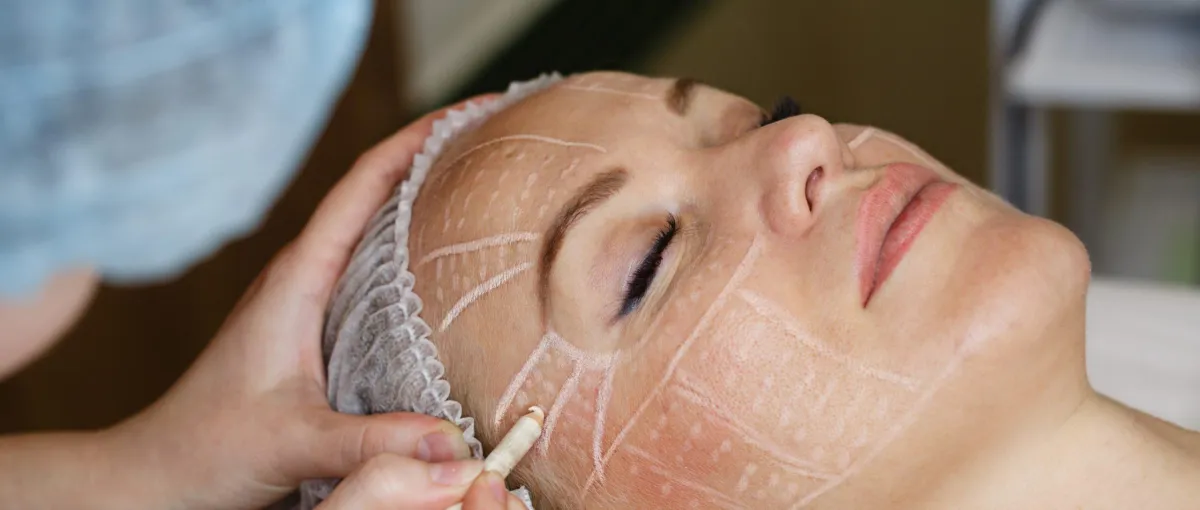







Facelift vs
Facial Resurfacing Procedures
The Facelift surgery is different from facial resurfacing procedures such as dermabrasion, laser, and chemical peels. Facial resurfacing refers to superficial changes in the skin with limited tightening of the skin. This can be beneficial in many cases, particularly for those who desire improvement of their "fine wrinkles". Just the same, one cannot expect the same results attained with facial rejuvenation surgery. The well-performed facelift achieves a more youthful appearance that turns the clock back 10+ years which is usually what people are wanting so the Facelift always provides higher satisfaction.

Results
You DON'T Want
What to Avoid in Facelift Surgery:
- A tight, windblown look is usually the giveaway that a person has had a facelift, even years later.
- Tethered earlobes & the shortening or loss of the tragus (the trap door over the ear canal) are undesirable deformities.
- A shortened or absent sideburn, giving a "white wall" look, is a giveaway for the average facelift.
- The quickie procedure often results in lesser improvement over a shorter period of time.

What
You DO Want
What To Expect: Results will vary with each patient. The facelift can help with a positive outlook on life. A lifestyle that is active and healthy will help to better maintain this younger looking appearance. A proper diet and regular exercise will increase quality of life by decreasing unwanted weight gain, which can be seen in the face. The facelift performed at Fairbanks Plastic Surgery often has results that keep a person looking younger for more than 10 years after the facelift. As compared to their photographs before the surgery, some patients feel that their appearance reversed 15 or even 20 years.


*Disclaimer: Individual results vary. Images do not constitute a promise or representation of any particular outcome or experience.
The picture above shows the results achieved by another surgeon. In the picture on the right, you can see the revised ear has more detail and a better shape and size.
The picture above shows the results achieved by another surgeon. In the picture on the right, you can see the revised ear has more detail and a better shape and size.
Things To Consider
Before Booking Your Utah Facelift
There are many reasons why you should get a facelift in Utah. One of the best reasons is to combat aging. As we age, our skin loses elasticity and volume which can lead to wrinkles and lines on the face. A cosmetic surgery like this one will help eliminate these lines by pulling up sagging skin around your neck or jawline, for example. Other benefits include giving you a more youthful appearance that will boost your self-confidence!
Another reason people have facelifts is to repair previous damage done from accidents or injury. If someone has an accident where they break their cheekbone, for example, then it might be necessary to do reconstructive surgery or receive facial reconstruction after the fact with a plastic surgeon who specializes in the face. These procedures usually require a doctor to pull up stretched skin and move it back in place with stitches to help your face look more appealing again. If you have been injured, this is a great way to repair any damage you might have done through surgery or something else!
The facelift procedure is generally performed under local anesthesia, but in some cases general anesthesia might be recommended. The entire procedure can take up to five hours depending on the extent of work that needs to be done, and the patient will need two weeks off work in order to recover fully.
If you are considering having a facelift in Utah, it is important to be aware of all possible risks and it is recommended that you also research the various facelift options. Then book your Consult with Dr. Fairbanks to review what will be best for you.
Things To Consider
Before Booking Your Utah Facelift
There are many reasons why you should get a facelift in Utah. One of the best reasons is to combat aging. As we age, our skin loses elasticity and volume which can lead to wrinkles and lines on the face. A cosmetic surgery like this one will help eliminate these lines by pulling up sagging skin around your neck or jawline, for example. Other benefits include giving you a more youthful appearance that will boost your self-confidence!
Another reason people have facelifts is to repair previous damage done from accidents or injury. If someone has an accident where they break their cheekbone, for example, then it might be necessary to do reconstructive surgery or receive facial reconstruction after the fact with a plastic surgeon who specializes in the face. These procedures usually require a doctor to pull up stretched skin and move it back in place with stitches to help your face look more appealing again. If you have been injured, this is a great way to repair any damage you might have done through surgery or something else!
The facelift procedure is generally performed under local anesthesia, but in some cases general anesthesia might be recommended. The entire procedure can take up to five hours depending on the extent of work that needs to be done, and the patient will need two weeks off work in order to recover fully.
If you are considering having a facelift in Utah, it is important to be aware of all possible risks and it is recommended that you also research the various facelift options. Then book your Consult with Dr. Fairbanks to review what will be best for you.
*Disclaimer: Individual results vary. Images do not constitute a promise or representation of any particular outcome or experience.
This sixteen-year-old male had a procedure done by another surgeon. In the secondary ear reconstruction, Dr. Grant A. Fairbanks was able to achieve more detail in the ear and the patient has had no infection or graft loss and the ear is maintaining a good shape and size.
This sixteen-year-old male had a procedure done by another surgeon. In the secondary ear reconstruction, Dr. Grant A. Fairbanks was able to achieve more detail in the ear and the patient has had no infection or graft loss and the ear is maintaining a good shape and size.
Common Techniques for External Ear Reconstruction in Utah
Common Techniques for External Ear Reconstruction in Utah
Rib Cartilage
Rib Cartilage
Patient's own tissue
Used to sculpt the ear framework
Patient's own tissue
Used to sculpt the ear framework
Ear Cartilage
Ear Cartilage
From the patient’s opposite ear
Partial reconstruction
For smaller defects
From the patient’s opposite ear
Partial reconstruction
For smaller defects
Skin Flaps
Skin Flaps
From skin near the ear
Coverage of ear framework or open wounds
Skin Grafts
Coverage of ear framework or open wounds
From skin near the ear
Coverage of ear framework or open wounds
Skin Grafts
Coverage of ear framework or open wounds
Microtia is associated with varying degrees of deformity:
Microtia is associated with varying degrees of deformity:
- Grade I: Mild deformity
- Grade II: Small Ear
- Grade III: Sausage or Peanut shaped ear (most common)
- Grade IV: Anotia (absent ear).
Microtia statistics:
- Grade I: Mild deformity
- Grade II: Small Ear
- Grade III: Sausage or Peanut shaped ear (most common)
- Grade IV: Anotia (absent ear).
The Procedure: Rib Cartilage Framework for Microtia Reconstruction
The result you can achieve through ear reconstruction depends on your surgeon’s artistic ability to sculpt the new ear from cartilage. The process begins with careful planning using measurements, patterns, molds, and plaster casts made from the ear on the opposite side.
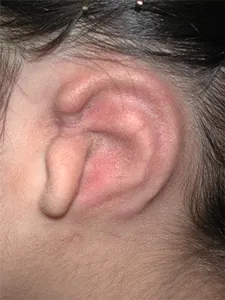
Stage I
During the first surgery, the patient’s own rib cartilage is carefully carved to make a framework that is implanted beneath the skin.
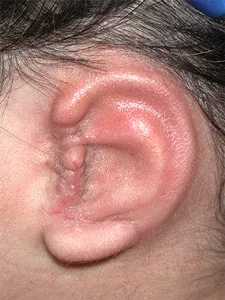
Stage II
Usually the earlobe is rotated into the proper position during the second stage of the reconstruction process.
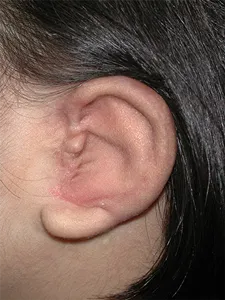
Stage III
During the third stage, the ear is elevated and a skin graft is placed behind the cartilage to create a space behind the ear.
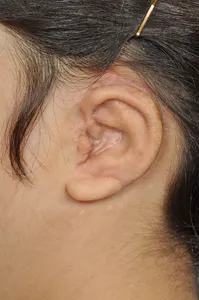
Stage IV
The forth stage typically includes refining the central cup of the ear (concha) and the protective door over the ear canal (tragus). A multiple stage approach is used to provide anatomic results.
Microtia– born with a small, deformed ear or born without an ear
Injury– partial or total loss of an ear due to trauma
Cancer – Partial or total loss of an ear due to cancer
*Disclaimer: Individual results vary. Images do not constitute a promise or representation of any particular outcome or experience.
Secondary Ear Reconstruction
In these pictures, this seven-year-old boy had Dr. Grant A. Fairbanks perform a secondary ear reconstruction, since he wasn’t happy with the results he received with another surgeon. In the top-left photo, you can see how the ear looked before Dr. Fairbanks worked on the patient. The top-middle picture shows the new rib cartilage framework positioned under the skin. The top-right photo shows the earlobe after it had been moved forward (typically, the movement is done from front to back). The bottom-left photo shows the elevation of the ear from the scalp and the placement of a skin graft behind the ear. The last picture shows the final elevation using a cartilage graft placed behind the ear.
*Disclaimer: Individual results vary. Images do not constitute a promise or representation of any particular outcome or experience.
We'd Love To Help You!
Our friendly staff is eager to help you set up a consultation & answer any questions that you may have.
Our friendly staff is eager to help you set up a consultation
& answer any questions that you may have.

Get Financing!
Find out how we can help you finance today!

Send Us A Text!
(801) 951-8099

Click To Give Us A Call!

Send An Email!
info@fairbanksmd.com

Fly In For Surgery!
Our patients fly in to Utah from all over the world!
Meet Grant A. Fairbanks, MD
Board Certified Cosmetic & Reconstructive Plastic Surgeon
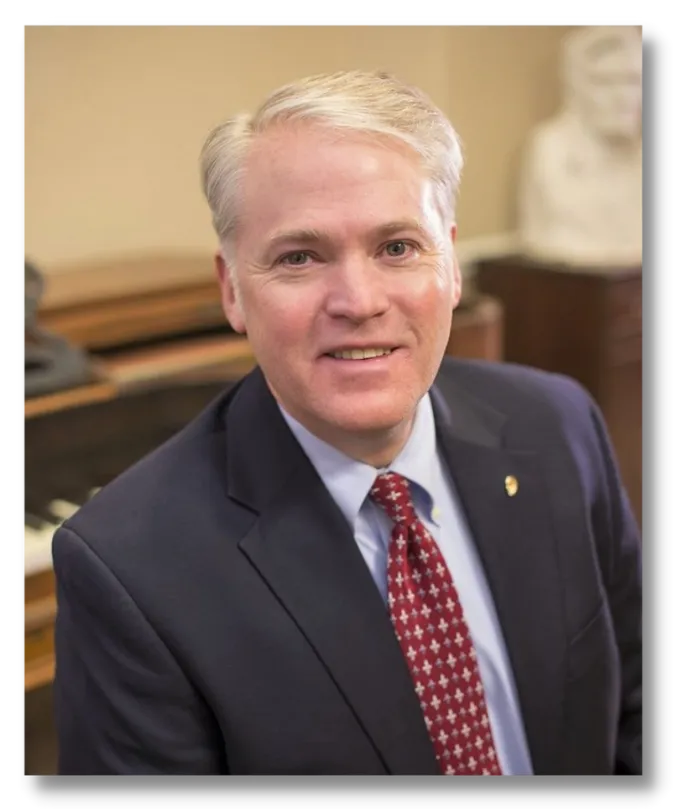

Dr. Fairbanks’ broad training in Plastic Surgery allows him to care for patients of all ages. He is highly trained as a Cosmetic & Reconstructive Plastic Surgeon in Utah & combines Advanced Surgical Skills with his Advanced Artistic Skills in order to get results that not only deliver Improved Functionality & Aesthetic Beauty, but most importantly, Natural Looking Results. Dr. Fairbanks Innovative & Exclusive approach to Plastic Surgery is respected around the world & he is recognized among the TOP Plastic Surgeons in practice today. His areas of expertise include Facial Plastic Surgery, Breast Surgery, Body Contouring & Pediatric Facial Deformities.


Meet Grant A. Fairbanks, MD
Board Certified Cosmetic & Reconstructive Plastic Surgeon
Dr. Fairbanks’ broad training in Plastic Surgery allows him to care for patients of all ages. He is highly trained as a Cosmetic & Reconstructive Plastic Surgeon in Utah & combines Advanced Surgical Skills with his Advanced Artistic Skills in order to get results that not only deliver Improved Functionality & Aesthetic Beauty, but most importantly, Natural Looking Results. Dr. Fairbanks Innovative & Exclusive approach to Plastic Surgery is respected around the world & he is recognized among the TOP Plastic Surgeons in practice today. His areas of expertise include Facial Plastic Surgery, Breast Surgery, Body Contouring & Pediatric Facial Deformities.
Copyright © All Rights Reserved by Fairbanks Plastic Surgery & T365TV & TTM
Copyright © All Rights Reserved by GAFMD & T365 TV & TTM

